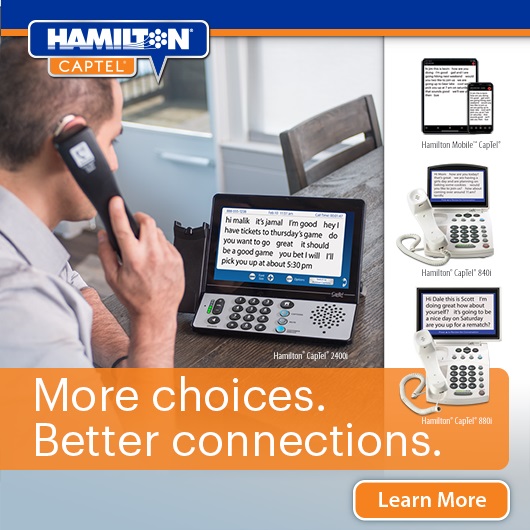|
www.HealthyHearing.com |
TV hearing aids and devices
By Joy Victory, managing editor, Healthy Hearing Last updated on: November 16th, 2023 Are you always turning the volume up on your television? You might benefit from a television amplifier system or other assistive listening device for the TV. If you have hearing loss, you may find yourself struggling to hear the TV. Fortunately, there are television-specific assistive listening devices (ALD). They include devices that boost the sound through headphones, stream sound through your hearing aids and provide closed captioning for your television. Why turning up the volume isn't a good solution
watch TV together. Simply turning up the volume can be a problem for two reasons. First, the louder volume may distort the clarity of the sound. Second, the level of the sound may become uncomfortably loud for people watching with you. How hearing aids make it easier to watch televisionWearing hearing aids can improve your ability to understand the television. Most hearing aids today have features for reducing background noise and amplifying signals coming from in front of you.
Programming your hearing aids for TVIf the sound is not improved, you should ask your hearing professional for assistance. They may be able to create a special program for your hearing aids. This program will help you hear the TV more clearly. TV hearing devicesWearing assistive listening devices for television has several advantages over turning up the overall volume on your set:
Directly stream TV to your hearing aids or headphonesGo wireless: Bluetooth, FM systems and telecoilsModern hearing aids (and headphones) can connect to wirelessly through Bluetooth or frequency-modulated (FM) systems. These systems can connect directly to some types of hearing aids, or through an intermediary device. Bluetooth technology can allow sound from the TV (or smartphone or another device) to stream directly into hearing aids. Once the hearing aids are paired, you can usually switch to wireless streaming via a single press of a button. Intermediary streaming devices also can receive an FM or Bluetooth signal and then send it to the hearing aids via another wireless connection. The device acts as a remote control, letting you adjust volume and change programs with the same tool. Telecoil optionModern hearing aids with a telecoil can stream the audio signal from your television directly to your hearing aids. Induction or hearing loopsInduction loops, or neckloops, have been available for a long time. An induction loop sets up a magnetic field that can be picked up by the telecoil in hearing aids. These systems may connect to the audio via the jack on your television or with a small microphone placed near the speaker of your television. The sound signal is transmitted to an amplifier loop running around the perimeter of a room or a small, personal loop worn around the neck of the listener. When you want to listen to television, you turn on and wear the neckloop (if applicable), then switch your hearing aids to the telecoil setting. Many public buildings, churches and theaters have this type of system to ensure accessibility for hearing aid wearers since induction loop technology is very easily accessed by anyone with a telecoil in one or both hearing aids. TV headphones for hearing impairedFor people who don't wear hearing aids but are hard of hearing, the most common ALD for television is TV earphones. These devices, also called TV headphones or TV hearing aids, are simple-to-use devices consisting of a transmitting base that plugs directly into your television's headphone jack and a headset worn by the listener wishing to hear the signal. One popular product, TV Ears, is a wireless headphone device that uses infrared light to transmit the sound signal from the transmission base to the earphones. Captioned televisionClosed-caption television allows you to both hear and read speech on the television The Federal Communications Commission (FCC) requires all digital televisions with screens greater than 13" to offer closed captioning. This is a great option for people with hearing loss because it likely already exists on your television. Look for a button on your remote control with a CC icon. It usually toggles captions on and off. It can take time to get accustomed to the captioning running across the bottom of your screen but those who use it regularly find it enhances their ability to enjoy television. Finding the best solutionIf you need help and don't know where to start, visit a hearing provider near you. Some hearing care providers sell TV-compatible devices, or can direct you to online or retail stores that sell them. Joy Victory, managing editor, Healthy Hearing
You are reading about: Related topics
More information about hearing loss, hearing aids, hearing aid brands and tinnitus. Featured clinics near me
Hearing Health Solutions from Ohio ENT - Columbus
Earzlink Hearing Care - Reynoldsburg Find a clinicWe have more hearing clinic reviews than any other site! Related contentThe Healthy Hearing Report |
|
www.HealthyHearing.com |
TV hearing aids and devices
By Joy Victory, managing editor, Healthy Hearing Last updated on: November 16th, 2023 Are you always turning the volume up on your television? You might benefit from a television amplifier system or other assistive listening device for the TV. |



 Joy Victory has extensive experience editing consumer health information. Her training in particular has focused on how to best communicate evidence-based medical guidelines and clinical trial results to the public. She strives to make health content accurate, accessible and engaging to the public.
Joy Victory has extensive experience editing consumer health information. Her training in particular has focused on how to best communicate evidence-based medical guidelines and clinical trial results to the public. She strives to make health content accurate, accessible and engaging to the public.